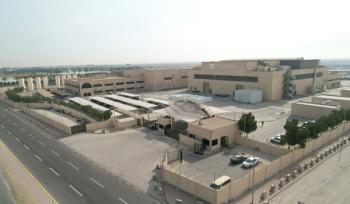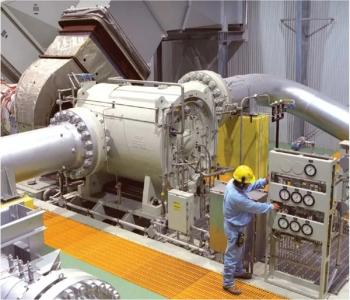
Healthy aftermarket
Aftermarket parts are the subject of our cover story, split into two parts. The first provides the OEM perspective— buy from us to protect product warranty, and take advantage of our domain expertise as well as benefitting from recent design enhancements. The second part takes a look at non-OEM alternatives. As well as price, they argue that in some cases they can improve performance and extend lifespan.
This has become a particularly hot area in light of the fact that F-class machines have been up and running now for more than a decade. Many have reached or exceeded their initial warranty and service contract periods.
According to estimates, the GT aftermarket amounts to close to $20 billion per year. The F-class accounts for the lion’s share. A year’s average maintenance is said to cost four times more than the E-class. While there is money in repairs and field service, spare parts dwarfs them both — the component business amasses over twothirds of total aftermarket sales. It’s no surprise then, that there is an ongoing battle for market share.
A wrong decision on parts could lead to millions in damages and possibly a stalled career. So which one should you choose? The safe thing to do is stick with the OEM. There is a saying in the IT industry that no one was ever fired for choosing IBM. They build reliable machines and have a solid reputation. The same can probably be said for OEM parts. No one is ever going to get fired for sticking to what the OEM says and only using OEM-approved components.
But in the GT field, it isn’t that simple. Taking the safe route is being trumped by budgetary and even performance demands. Some non-OEM players have come out with designs they claim are better than the originals. That can mean more MW and a longer life. But the OEMs are not standing still. They are releasing their own upgrades, promising greater reliability, durability and better power output.
The bottom line is that the aftermarket is richer than ever. The presence of third parties has created competition technologically and has brought price pressure to bear on the market. Some OEMs have responded by lowering their rates. Thus even those steadfastly relying on OEM components have benefitted from the non-OEM marketplace.
Those determining which path to take are advised to talk to all concerned. Hear what the OEM has to say. Speak to prospective third-parties and ask for references specific to your type of equipment. Call in experts for further assessment. In short, do your homework.
Another key point is to talk at length to your peers. This can best be achieved via user groups, such as the Combustion Turbine Operators Task Force (CTOTF), 7EA Users Group, Western Turbine Users Inc. (WTUI) and others. Via these forums and their annual meetings, you can find plenty of people who can tell you their successes and perhaps a few horror stories from the aftermarket. Further, these meetings give you a chance to meet the suppliers and come face to face with the OEMs who are typically well represented. Listen to all sides in order to make an informed decision.
Columnists
We’d like to welcome a new columnist.Amin Almasi is a registered professional engineer from ‘down under’ who specializes in rotating equipment, condition monitoring and reliability. He makes a fine addition to the team. His introductory column addresses turbomachinery modeling and surge avoidance.
We’d also like to extend our continued appreciation to our Myth Busters, Rainer Kurz and Klaus Brun. This month’s topic on NOx emissions is a must read. Many complain about emissions regulations. The Myth Busters manage to prove that low singledigit NOx regs are not only a wrong target but largely a waste of time.
Newsletter
Power your knowledge with the latest in turbine technology, engineering advances, and energy solutions—subscribe to Turbomachinery International today.





